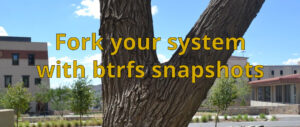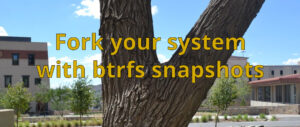Welcome to Technology Short Take #130! I’ve had this blog post sitting in my Drafts folder waiting to be published for almost a month, and I kept forgetting to actually make it live. Sorry! So, here it is—better late than never, right?
Networking
- Here’s a walkthrough on using DNS over TLS on Fedora.
- Some Twitter followers recently pointed out gnmic, a gNMI CLI client. gNMI, by the way, stands for gRPC Network Management Interface (more information on gNMI can be found here). I haven’t used
gnmic, but it certainly looks like an extremely useful tool.
Security
- Everyone’s favorite three-letter agency recently released some VPN security guidance, as reported by this InfoSecurity Magazine article. The article also provides some links to said guidance, for those that are interested.
- Matt Hamilton takes a closer look at a recent security vulnerability in the Harbor container registry. This vulnerability, known as a Server-Side Request Forgery, allowed Harbor project owners to scan the TCP ports of hosts on the Harbor server’s internal network.
- Ivan Pepelnjak discusses the security implications of so-called “Smart NICs.”
- Want to use a Yubikey to automatically lock and unlock your Linux system? See here.
Cloud Computing/Cloud Management
- Dusty Mabe discusses K9s, a “terminal UI to interact with your Kubernetes clusters,” in this blog post.
- Steven Wade shares a cautionary tale about how SSO brought a Kubernetes cluster to its knees. Fortunately, Steven also shares the mitigation steps that he and his team took, so that others might be able to avoid the same fate.
- Jeff Bryner shares his experience in using the AWS CDK for deploying Docker containers.
- Laszlo Fogas talks a bit about Kubernetes requests and limits.
- Mike Krieger shares some information on how rt.live (a site sharing updates of the COVID-19 Rt) handles their daily runs to update data.
Operating Systems/Applications
- I recently came across the
jcutility, which converts “ordinary” command-line output from a number of different utilities into structured JSON output. Read about why the author created jc in this blog post. - If you’re new to the GNOME desktop environment, Ori Alvarez’s article on how to create a GNOME desktop entry may be useful.
- According to The Verge, Windows 10 users aren’t very happy about Microsoft’s forced roll-out of its Chromium-based Edge browser.
- Justin Garrison shared some shell functions for making it easier to switch AWS CLI profiles, or set AWS region (for example). They’re written for
zsh, but should be adaptable to other shells without unreasonable effort. - James Pulec walks readers through Git Worktrees, the “best Git feature you’ve never heard of.” Indeed!
- I missed the announcement about the release of the Debian 10 “Buster” handbook.
- Via Ivan Pepelnjak (who in turn got it from Julia Evans), I learned about entr, a Linux CLI tool to run arbitrary commands when files change. Handy.
- This site has more details about the X11 Window system than most people care to know.
Programming
- Gergely Orosz shares some data structures and algorithms he actually used at a few different tech companies.
- I also learned that the Go language server (
gopls, used by Visual Studio Code and many other editors for Go language awareness) doesn’t work properly whengo.modisn’t in the root directory of whatever you’ve opened (see here). The workaround is to use a “multi-root workspace.”
Storage
- Chris Evans examines how persistent memory in the data center plays out with existing storage technologies.
Virtualization
- With the announcement of a new version of macOS come new beta builds, and articles about running those beta builds in a VM. Here’s the latest. It’ll be interesting to see how virtualization continues (or maybe doesn’t) when Apple moves to its own custom ARM processors.
- William Lam talks about options for evaluating vSphere with Kubernetes.
Career/Soft Skills
- A co-worker (thanks Joe!) pointed out this article on the concept of inversion. I found the article quite interesting, and it has already affected my thinking and how I am approaching/will approach certain projects that I’d like to tackle.
And that’s a wrap! Feel free to contact me on Twitter if you have any questions or comments (constructive feedback is always welcome). Thanks for reading!
![]()






